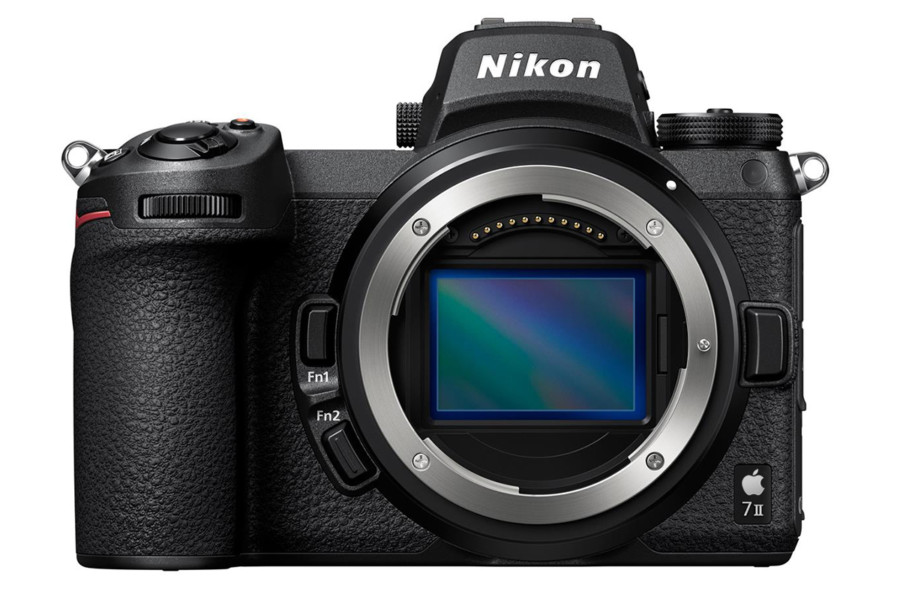What If Apple Acquired Nikon?
Apple could never financially justify such a transaction, yet its potential is impressive.
Nikon has endured years of revenue decline and stock price decrease, due to a COVID-19-induced slump in camera sales that affected all industries. Much has been written about their ILP-based Z system’s slow rollout; bizarre product launches like their Df camera; and total failures like their DL compact series – however these issues pale in comparison to smartphones becoming mainstream devices.
Though digital still camera sales have steadily decreased since 2013, consumers still purchased approximately 8 million digital still cameras with interchangeable lenses in 2019 (by comparison, Apple sold approximately 185 million iPhones during that same timeframe), with travel and consumerism expected to drive increased camera purchases post-COVID. Most smartphone users may never purchase dedicated cameras directly; but smartphones still serve as gateways for some.
Sony, Canon and Nikon have each innovated with mirrorless technology, autofocus tracking and sensor resolution over the past decade, but have generally avoided adopting computational/programmable approaches adopted by smartphone manufacturers. Zeiss ZX1 uses modified Android OS but apparently relies heavily on Adobe Lightroom as its secret weapon; but this paperweight of a camera costs thousands.
Attributed to size constraints, smartphone manufacturers continue to push the limits of technology with folded lens optics attached to tiny sensors – using software stacking capabilities for optimal image quality. Consumer desire for different focal lengths or creative choices has given rise to third party clip on lenses; but ultimately dedicated optics combined with a larger sensor housed within an ergonomic package are unrivaled.
Returning to Nikon, its market share has decreased into the teens (by comparison, Canon owns 48% of market share). Any combination of new features – from 8K video to more megapixels – are unlikely to significantly alter this tenuous position; like any struggling technology company, pivot or perish an unceremonious death.
Simultaneously, after nearly a decade of designing their own A-series chips for iPhone and iPad, Apple introduced their highly anticipated M1 chip – an ARM-based system-on-chip (SoC) believed by analysts to cost just one fifth of what Intel chips cost before. Photo industry SoC’s such as Expeed or Bionz cannot compare with Apple’s engineering resources, supply chain expertise or unit cost.
Imagine a Nikon camera built on iOS powered by Apple Silicon and featuring LiDAR sensors; autofocus algorithms like face tracking could easily be upgraded or replaced with third-party versions. Computational capabilities like HDR, noise reduction and image stabilization could set a Nikon/Apple camera apart in the photo ecosystem. Airdrop could offer near-immediate backup for images. An iPhone could serve as an excellent hotspot, eliminating the need for cameras to also act as phones. An app ecosystem could easily add functionality such as “Holy Grail” intervalometers, astrophotography guides, remote photography capabilities and more. UI would emulate iOS or MacOS design language – finally ridding us of an outdated 20-year-old menu system. Furthermore, its USB-C port and software programmability could enable a whole ecosystem of add-ons that people would be excited about using – it’s sure to excite many.
Apple has enjoyed a strong market position due to their closed ecosystem and relative isolation from Android-related issues, so Sony and Canon would find it more difficult to follow in Apple’s footsteps in such an aggressive manner. Canon recently filed a patent application for an Osmo-style gimbal that uses interchangeable lenses similar to that used on Sony’s QX-100; these companies may therefore be better placed to innovate than Apple itself.
Apple currently holds nearly $200 billion in cash. Nikon has a market cap of approximately $2.25 billion, so the acquisition would only represent a tiny part of this total figure. That said, this deal makes no sense for Apple – an organization focused on emerging technologies like AI or consumer features (DarkSky). An acquisition would likely do nothing for them directly; but perhaps a partnership or joint venture might allow them to explore an alternate market for Apple Silicon; after all, if it proves itself better and cheaper than Intel for future products then imagine Amazon EC2 clusters filled with their chips — potential revenue sources galore!
2021 is set to be an exciting year of economic recovery and renewal of human spirit; and I can think of nothing more thrilling for Nikon users like myself than an acquisition plan that makes more sense now than it ever will in years past.
